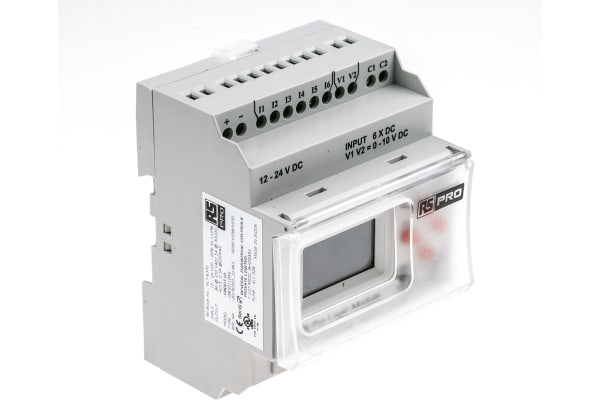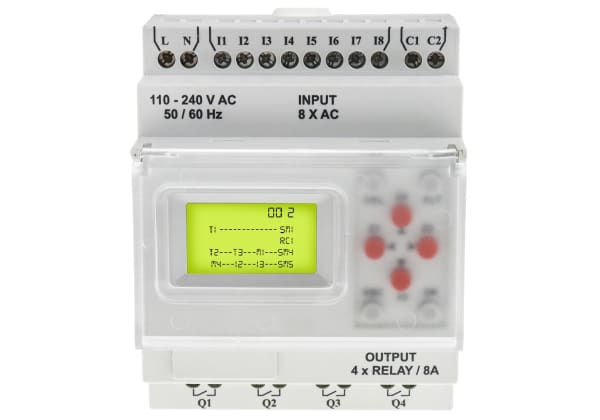- Published 24 Sept 2025
- Last Modified 24 Sept 2025
- 7 min
Precision Component Manufacturing for Timing Solutions
Precision component manufacturing requires technology with high levels of timing accuracy. This article looks at technologies such as atomic clocks that enable accurate timing and explains how to overcome common engineering challenges when using them.

Precision component manufacturing requires advanced technology that provides high levels of timing accuracy during manufacturing operations: technology such as atomic clocks and crystal oscillators. These types of devices provide critical timing that influences everything from product quality to production efficiency and synchronisation of processes.
This article explores why top-notch timekeeping is important to precision component manufacturing, looks at some of the key technologies that enable accurate timing and synchronisation, and explains how to overcome some common engineering challenges in these areas.
Atomic Clock Technology
The first practical atomic clock was built in 1949, with the first high-accuracy caesium atomic clock developed in the UK at the National Physical Laboratory in the mid-1950s. Atomic clocks tell the time based on the natural vibration frequency of atoms, most commonly caesium-133 atoms.
Atomic clocks are ultra-accurate, with their accuracy defined in terms of how much time they lose or gain over a period. For example, a caesium beam clock, which operates by measuring the resonance frequency of caesium atoms, is accurate to +/- 1 second over a 30-million-year timespan. In manufacturing, atomic clocks provide timing information to precision component manufacturing industries such as semiconductor manufacturing, aerospace, and medical device manufacturing.
Using Atomic Clocks in Manufacturing
Although it’s rare for atomic clocks to be used within production machinery itself, manufacturers can achieve their critical timing needs by installing an accurate factory-wide atomic clock-based system.
This may mean connecting to a GPS or national time server that is synchronised using atomic clocks and distributed over a network time protocol or precision time protocol across the facility. Equipment on the shopfloor can then be networked together to connect to the timing system using the local Ethernet.
This can help a manufacturer precisely coordinate equipment such as programmable logic controllers (PLCs), sensors, and robotics. In industries where time-stamping is crucial, such as aerospace, atomic clocks provide the means of showing exactly when an event has occurred during production.
Some drawbacks are that atomic clock technology is expensive, delicate, sensitive, and consumes a lot of energy. In many manufacturing applications, the level of accuracy that atomic clocks provide simply isn’t necessary. But for those sectors that need the highest standards of precision when it comes to timing, such as healthcare, where time stamping is crucial to product quality and safety, they are the best, most accurate solution on the market.

Crystal Oscillator Precision
In contrast to atomic clocks, a crystal oscillator uses quartz crystals to generate a highly consistent frequency to keep time accurately. These small, cheap devices are often installed in printed circuit boards, PLCs, and sensors.
They are a lot less accurate than atomic clocks (with a typical accuracy of around +/-15 - +/-20 seconds a month), though they are often thousands of times less expensive and use less power. For example, it’s for this reason that you will find crystal oscillators in wristwatches.
Where are Crystal Oscillators Used in Manufacturing?
Crystal oscillators are typically used in manufacturing for automation, control, and monitoring. For example, they are widely used in SCADA systems. They’re used in the controls for motors, servos, and robotics, in computer-numerically controlled (CNC) machinery, and in sensor systems for measuring temperature and flow, condition monitoring, or quality control.
Precision component manufacturing relies heavily on crystal oscillators to generate an internal clock signal within production equipment. However, it’s important to remember that these devices will drift in accuracy over time, so it’s necessary to synchronise machinery when high-precision operations such as time-stamping of components or processes is needed.
It’s also important to choose crystal oscillators that can survive the environment they are working in. For example, if the environment is particularly noisy, hot, high in vibrations, or if equipment is exposed to electromagnetic interference, you may need special types of crystal oscillators designed for these conditions.
That’s where temperature compensation oscillators come in.
Temperature Compensation
Sometimes, crystal oscillators are needed that can work in different temperatures. When temperatures fluctuate, this may cause changes in the crystal vibration frequency, which can impact timing accuracy.
Temperature-compensated crystal oscillators prevent timing errors from occurring by maintaining frequency stability even while temperature changes. These oscillators work by monitoring the operating temperature in the environment, predicting how the frequency will be impacted, and adjusting the output frequency to compensate.
Some oscillators also feature a minuscule heater that keeps the temperature constant to minimise changes to frequency. These are known as oven-controlled crystal oscillators. Both temperature-compensated and oven-controlled oscillators are more accurate than standard crystal oscillators.
Where are Temperature-Compensated Crystal Oscillators Used?
Temperature-compensated crystal oscillators are used in harsh environments, such as in oil and gas pipelines, wind and solar energy plants, and water treatment. Oven-controlled oscillators provide another step up in accuracy. For example, for metrology applications where there are variations in temperature.
Consider using a temperature-compensated crystal oscillator when you require improved frequency stability but don’t want the extreme precision of an atomic-clock-based timing system. These types of oscillators should be used in environments subject to temperature change, such as outdoors, proximity to machinery, or within heating, ventilation, and air conditioning systems.
Frequency Stability Requirements
Your requirements in terms of frequency stability will depend on the level of error in timing accuracy you are prepared to tolerate as part of your application.
There are a lot of different factors that affect stability. These include temperature and other environmental conditions, such as changes in voltage. Applications that require very precise time-stamping, or very precise communication and synchronisation between different machinery, will need more accurate timing systems than those used in typical consumer electronics devices.
The level of frequency stability, the consistency of frequency over time, can be expressed in a number of ways, including parts per million (ppm), parts per billion (ppb), or drift over the day. Frequency stability of 1ppm indicates a drift of 1Hz in frequency per MHz. In a 1GHz application, 1ppb frequency stability indicates a 1Hz variation.
While a basic crystal oscillator might vary in frequency stability from +/- 10 to +/-100ppm, an atomic clock has a variation in frequency stability measured as <0.000001ppm.
Engineers looking to determine the frequency stability they need should ask:
- How accurate does this system need to be over a period of time?
- What environmental conditions is the system operating in?
- Will the system be synchronised externally?
Industrial automation requires greater frequency stability than toys or consumer clocks. Internet of Things and wireless sensors may, in turn, require greater frequency stability than industrial automation, while high-speed communications may require still greater standards of accuracy.
Application-Specific Solutions
Precision component manufacturing application-specific solutions for timing vary widely. Applications include CNC machining, metrology, 3D printing, producing mirrors and lenses, electronics manufacturing (such as printed circuit board manufacture), and the fabrication of semiconductors.
Manufacturing machinery relies on timing to synchronise tool paths and engagement. Quality assurance processes rely on precise timing to determine scan rates and to generate time-stamped and repeatable position and measurement data.
Additive manufacturing (3D printing) requires very accurate synchronisation between the movement of the tool head and material deposition, and to generate time-stamped logs for quality control.
In PCB manufacture, accurate timing is important for depositing solder and picking and placing components. Semiconductor manufacturing processes, such as photolithography and etching, need very precise timing to control them correctly (specialist semiconductors include MOSFET transistors). Using lasers for micro machining operations requires precise timing of laser pulses, meanwhile.
The type of timing technology that’s appropriate will vary depending on the application. Advanced metrology and lab applications may require a caesium-based atomic clock solution, while CNC machining or 3D printing may require temperature-compensated or oven-controlled oscillators when both increased accuracy and environmental robustness are required.
Learn more about some of the key components for automation supplied by RS, including PLCs, human-machine interfaces, and industrial computing, and our MOSFET range.

